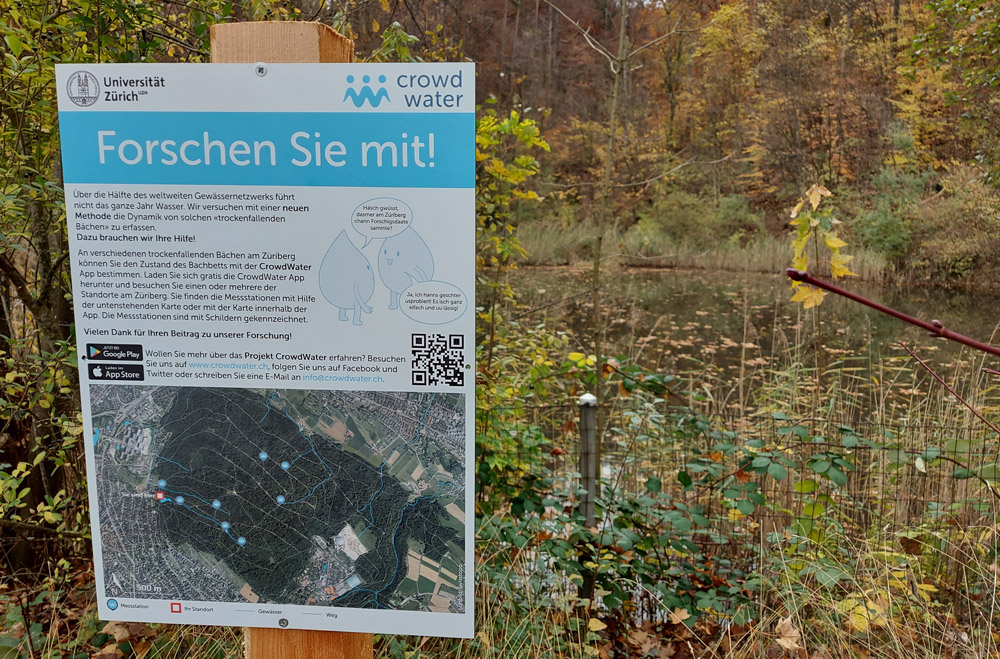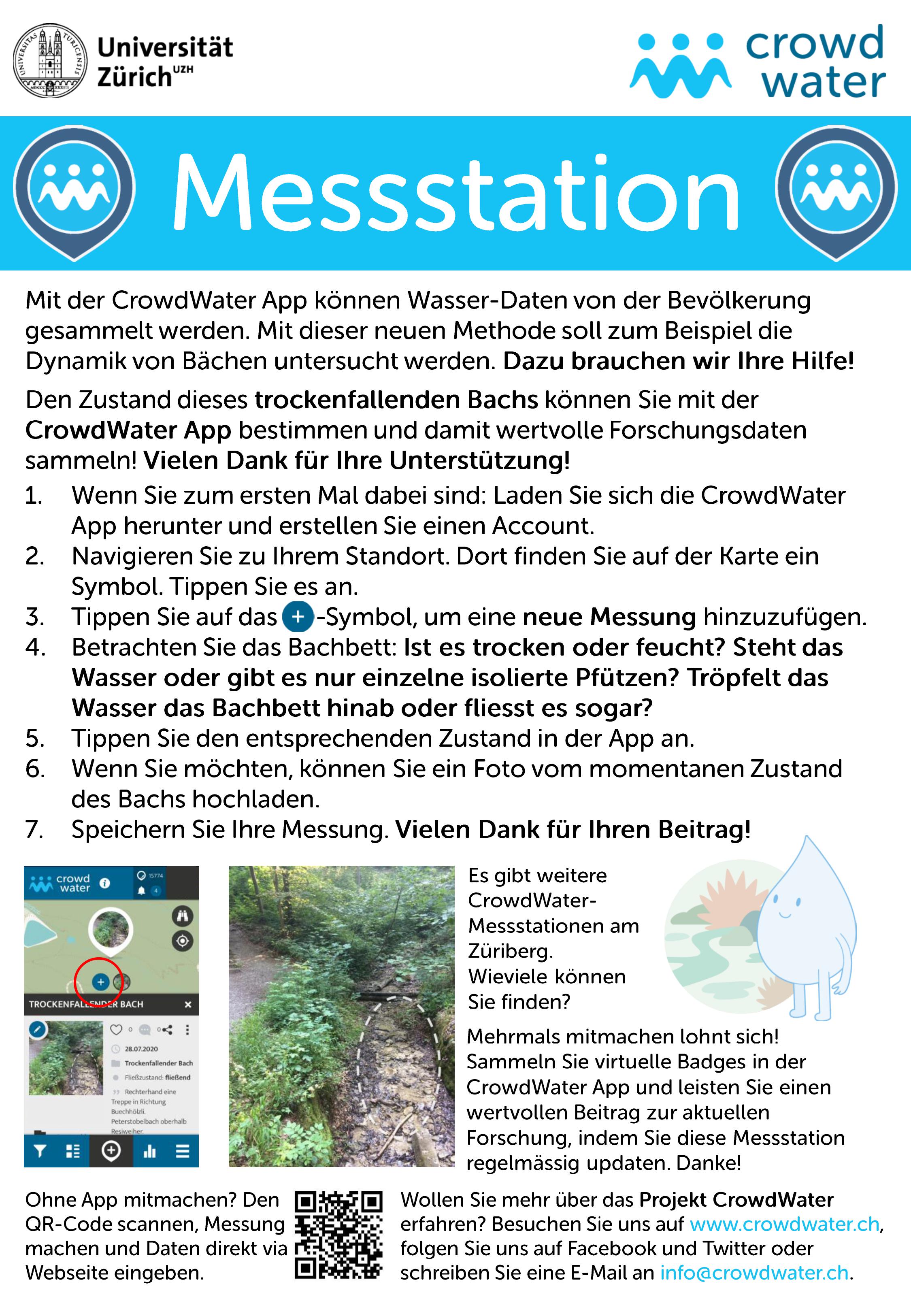#116: Temporary streams at the doorsteps of Irchel Campus
No need to go far outside the city of Zurich to observe hydrologically interesting locations like temporary streams. They fall dry from time to time and play an important role for aquatic life. But data on these streams are still missing. Can we count on you?

Temporary streams have high biodiversity and are home to fish, aquatic invertebrates and aquatic plants. They cover a large fraction of the total river network, but often they are not shown on maps. Some of them flow seasonally, others flow in response to rainfall or snowmelt events. This can lead to high sediment and nutrient fluxes and influence water quality.
Understanding their intermittence is essential
Temporary streams are particularly sensitive to climate change and other human influences. To manage and protect them effectively, we urgently need an understanding of both natural and artificial causes of intermittence.
We, the CrowdWater team, started a campaign to monitor temporary streams on Zürichberg, right behind Irchel Campus. We installed signs that inform on how to report observations of their flow conditions with the CrowdWater App. But surprisingly enough, to ram the wooden poles in the ground we needed more muscle strength than expected. Luckily, we had help from an amazing forester.
| Recognizing the true professional for hammering the pole into the ground: Mirjam and Franziska versus the forester. |

Your help is needed!
It was an awesome day outside in the lovely autumn forest and we were able to pick out some interesting streams. Now we count on you to report if the river bed is dry or wet, if there are isolated pools of water, or if the water is trickling or flowing. So, whenever you need a little break from your office and your computer screen, go outside, visit this beautiful forest and look for intermittent streams! With your help we can better characterise these streams.
CrowdWater all over the world
If you want to go for a longer hike at the weekend, you will also find our signs at the Thurfälle in Toggenburg. And for the time when we all might resume travelling: There are many CrowdWater spots all over the world waiting for your updates or your new creation!
Mirjam Scheller

